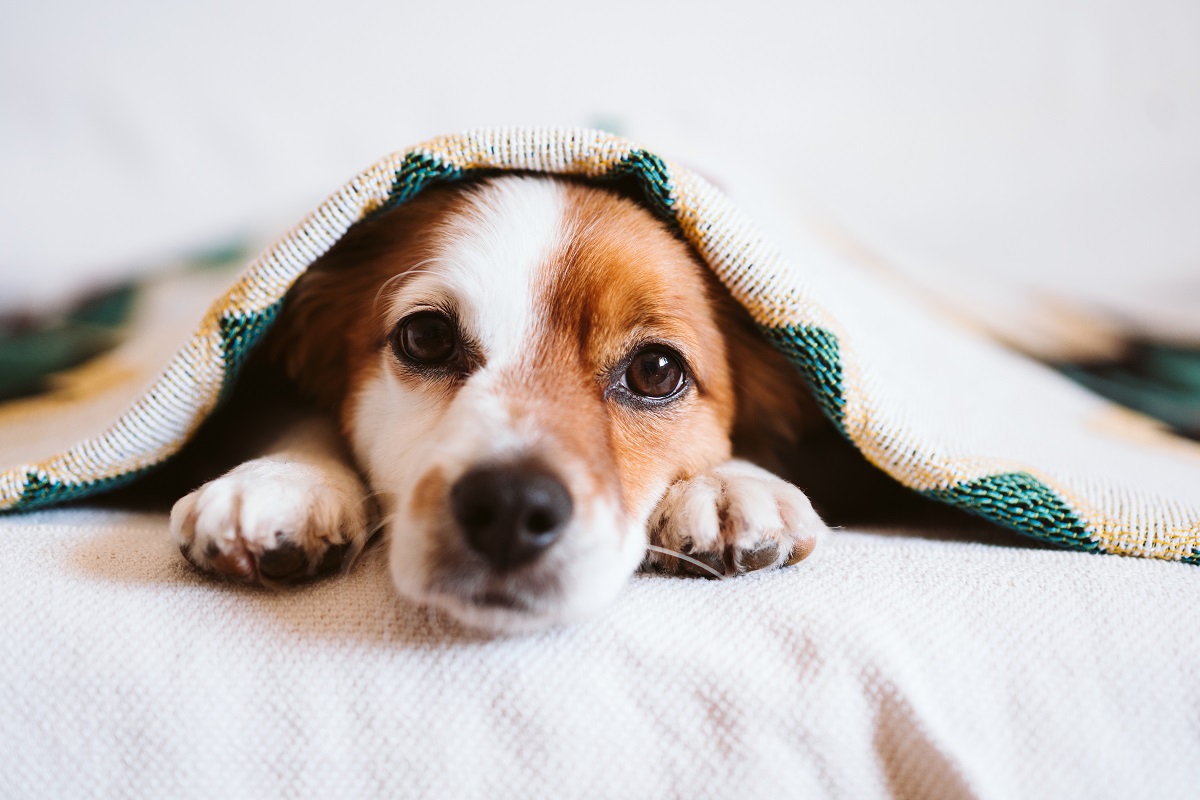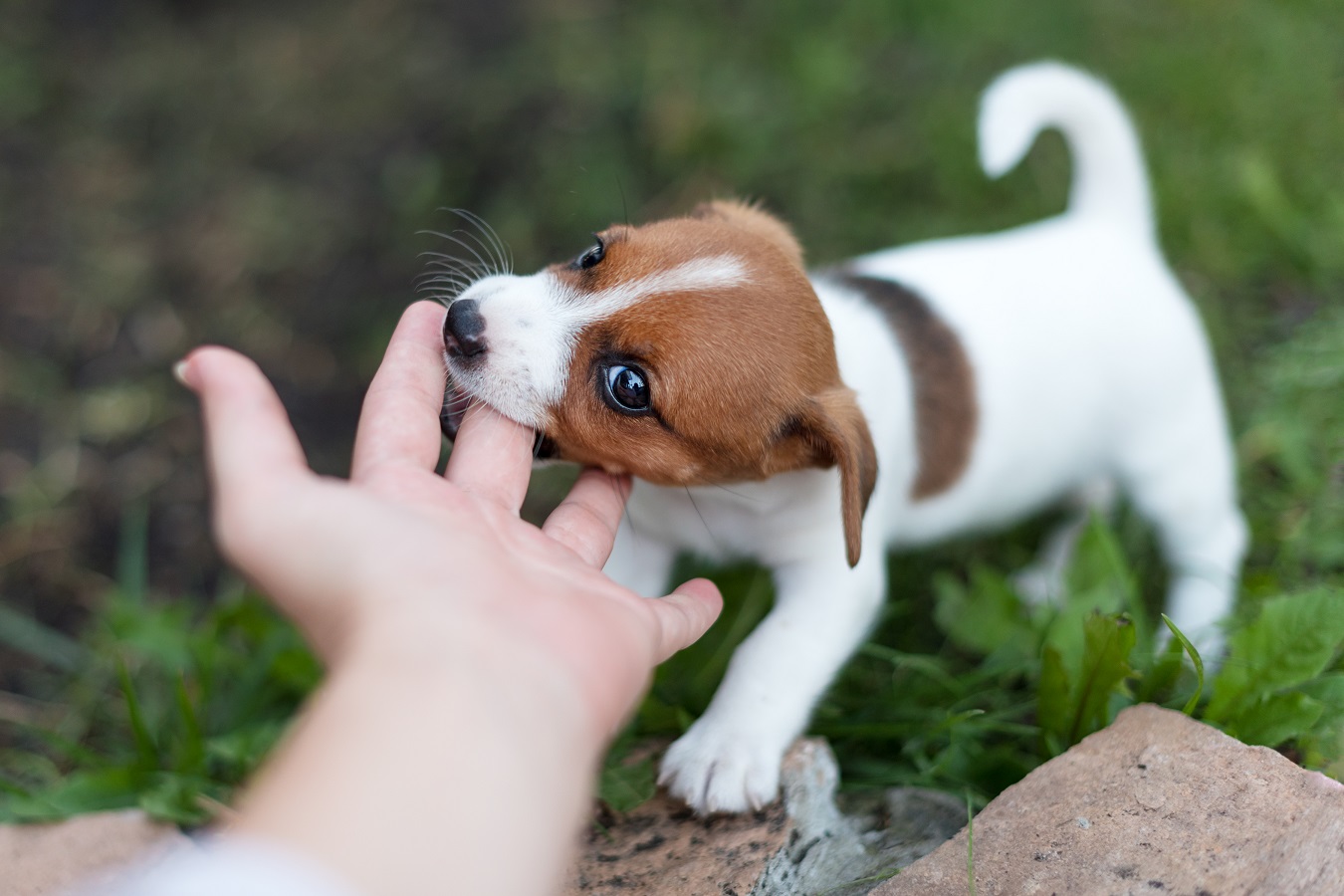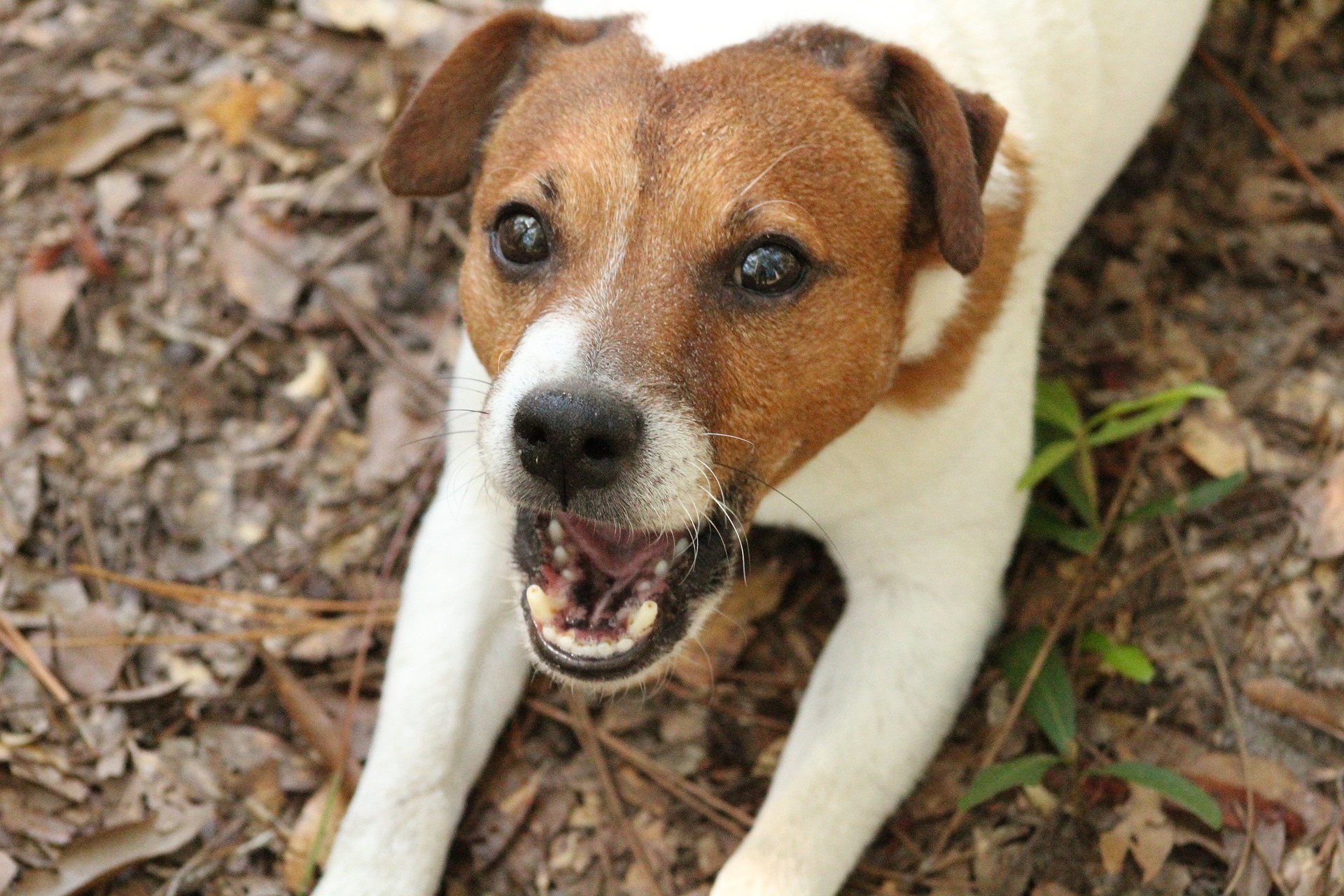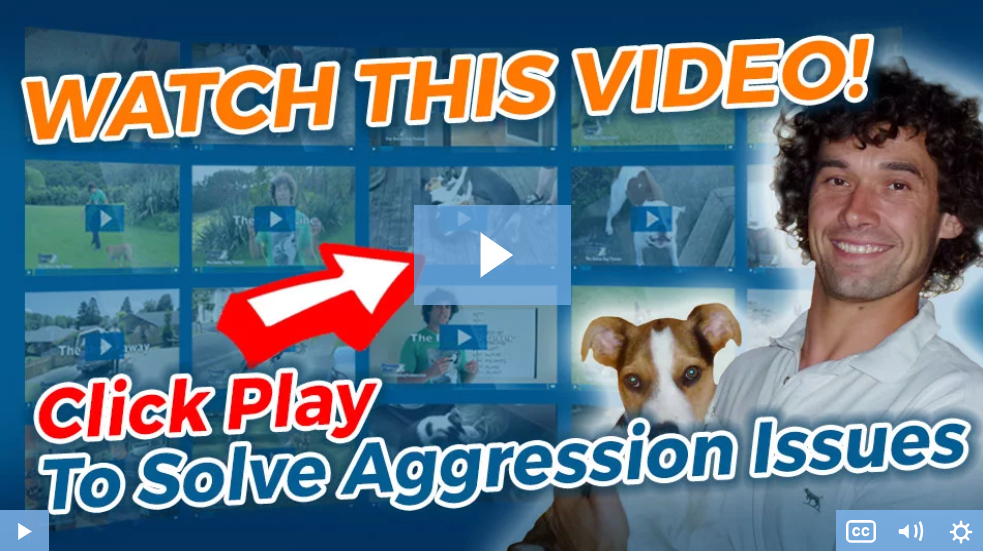Over the past few years, I’ve lost count of the number of emails I get about dealing with aggressive puppy behavior.
So to put these issues to rest, I want to address one of the most common questions I’ve had to date, which is… “Why is my puppy so aggressive?”
Now, nobody wants to see their loveable puppy grow into an aggressive (potentially dangerous) dog.
But unfortunately, it happens so often that it can feel like a race against time to make sure your gentle, sweet puppy doesn’t grow into an aggressive nightmare.
Worse still, it can put a huge strain on the relationship you have with your puppy that can (in worse case scenarios) continue into their adult life.
I speak from personal experience when I say that nobody deserves to go through this frustration. So it’s essential to try and steer your puppy in the right direction before they start to reach adolescence.
The good news is that there is a very specific way you can teach your puppy to remain calm in any situation that triggers their aggression.
Better still, it has nothing to do with outdated and often forceful training methods. And instead, involves a few tried and tested calming techniques that make your puppy highly responsive and relaxed.
I can’t take all the credit for this method because the truth is, I actually picked it up from Dan Abdelnoor over at The Online Dog Trainer. (see video below)
But over the years, these specific calming techniques have proven themselves time and time again when it comes to calming the aggressive nature in pups.
Better still, they take just minutes a day to apply.
Anyway, if you want to see what these exercises are, and how they can calm your seemingly sweet puppy from a life of aggression, go ahead and watch the short video below where Dan reveals all.
Here’s the video link to take a look: Click Here To Discover How To Finally Stop Your Pups Aggressive Behavior Using Simple, Highly Effective Calming Exercises That Take Just Minutes A Day To Implement!
(video will open in a new window)
Signs Of Aggressive Puppy Behavior
Put simply, the most common signs of aggressive behavior in puppies include growling, snarling, snapping, nipping, lip curing, lunging, aggressive barking, resource guarding, dominance, and biting.
However, sometimes (depending on the situation), it’s hard to differentiate play from aggression. This results in some puppy owners mistaking aggression for normal play behavior.
But there are, in fact, a few signs you can look out for to know if your puppy has developed (or developing) aggressive behavior.
So here are some warning signs to look out for…
- Growling when you or another dog approaches their food or toys.
- Attempting to bite smaller or less aggressive dogs to assert their dominance.
- Lunging at strange people, dogs, or other objects while walking
- Showing their teeth, growling, snarling, snapping, or even biting.
- Tension in the body and/or remaining completely still.
If you notice any of the above warning signs in your little puppy, there are higher chances they’re aggressive.
Common Reasons Puppies Can Become Aggressive
While aggression in puppies tends to show up during adolescence, which is 6-18 months. Some puppies develop aggression even earlier.
This is why it’s crucial to keep an eye on your puppy’s aggressive tendencies while they are still young.
Generally, many puppies are genetically predisposed to aggressive behavior tendencies. But you should keep in mind that there is no single dog breed that is an exception when it comes to aggression.
Therefore, it is your responsibility to find out what factors trigger aggression in puppies. Here are the common reasons why puppies get aggressive:
1. Lack of Training
When you see an aggressive puppy, you may think they were born that way. But that’s not true.
Lack of training is a major cause of aggressive behavior in puppies. And untrained puppies may not know how to respond to certain situations with their instincts.
Once you sense that your puppy could be aggressive, it is crucial to train them and have a sweeter puppy.
If you fail to recognize the signs of aggression in your puppy. You’ll eventually end up with a violent dog that is out of control.
2. Fear
A fearful puppy can quickly develop and exhibit aggressive behavior.
If your puppy senses danger and they are in a situation where they cannot escape. Then their natural instinct will be to defend themselves.
This is purely because they think they’re in danger. Hence, they become aggressive.
If your puppy is not well-socialized or trained. They might exhibit aggressive or fearful behavior, which might be more than expected.
3. Resource Guarding
Resource guarding is also known as possession aggression. This aggression occurs when your puppy is possessive of something.
Possessive puppies will guard their valued things like food, toys, and other objects, even if it means to be violent.
A possessive puppy may start growling when someone or another pet approaches them when they eat or gets close to their favorite toy.
You must have realized that your puppy recognizes your home as their territory. And they are sometimes susceptible when a stranger is around.
Nevertheless, the degree of possessive aggression varies from one puppy to another and between the object.
A puppy may adore a toy so much when they are young but become less possessive as they mature.

4. Frustration
Puppy aggression that is caused by frustration is known as redirected aggression.
This aggression occurs when a puppy is frustrated and is not able to get something they want.
Frustration can occur in many situations, but some of the more common reasons can be when they are restrained on a leash or when they spend a lot of time tied up.
For instance, if your puppy is chained somewhere in the yard, they may spend the day struggling to free themselves.
In this is the case, your puppy might attempt to free themselves to get to other dogs across the street or in an adjacent yard.
If they fail, they’ll quickly become frustrated and start exhibiting signs of aggression.
When you approach them at such a point, they redirect their anger towards you, and they might even bite you.
5. Illness and Injury
Your puppy can also inhibit aggressive behavior when they have some medical conditions.
Research has revealed that puppies who suddenly display aggressive behavior may have an injury or an illness that causes pain, discomfort, or stress.
If your puppy is injured and is experiencing pain or discomfort, they may start to snap, growl, or even bite.
Some possible medical conditions in puppies include arthritis, internal injuries, ear infections, dental diseases like canine itching, and itchy skin.
6. Show of Dominance
As with big dogs, pups can as well display aggression as a show of dominance.
Signs of dominance are usually directed towards other puppies and dogs. But in extreme circumstances, their aggression can even be directed towards you.
When it comes to evaluating the show of dominance in your puppy, you should bear in mind that dominance is just a developed behavior and not a personality trait.
And yes, it is possible to stop the show of dominance in puppies.
Generally, puppies are not naturally dominant or submissive. Some puppies may tend to display dominance when faced with certain circumstances.
Pups that show dominant behavior feel that they should prove to other puppies or pets they are in charge.
So when they feel that their position is challenged. They will often become aggressive and start growling, snapping, or biting.
7. In-Home Aggression
When two or more puppies live together, they tend to develop chronic agonistic behaviors against each other.
In-home aggression is common in puppies who live in the same home. And can be triggered by simple things like fighting over the bowl at mealtimes.
The chances of ‘in-home aggression’ increase as the number of puppies increases. So, if you have two or more puppies, it’s wise to give them food with separate bowls.
(video will open in a new window)
How To Stop Aggressive Puppy Behavior
Once you discover that your puppy has developed aggressive behavior, it then becomes crucial to learn how to stop them from becoming aggressive dogs.
So here are some of the most and tried and tested methods that (in my experience) have been proven to stop puppy aggression…
Teach Your Puppy To Deal With Stressful Situations
Stressful situations can cause frustration and trigger aggression in puppies.
And the worst part is that a lot of owners mistakenly think that it’s just in their puppy’s nature to be aggressive.
However, this is not always the case. And as we’ve already highlighted above, stress and other factors can often be the common culprit of aggression.
So what can you do?
Well, if you want your puppy to tolerate stressful situations, the best thing you can do is to simply train them.
You can do this by paying attention and recognizing the things that cause stress and discomfort to your puppies.
By doing this, you might see a particular trait that you never noticed before and ultimately start putting together an effective plan to address it.

Teach Your Puppy To Be Brave
It doesn’t take a bad experience for your puppy to become fearful. Having said that, it doesn’t help if you or anybody else your puppy interacts with regularly instill fear in your dog.
So if you want your puppy to become courageous and overcome fear, you need to give them an opportunity to socialize with other dogs, pets, and people.
Socialization is vital for fighting fear in your sweet puppy. Let your puppy get out sometimes, play with kids and other pets, and have fun as well.
It will also help if you expose your puppy to noises, frightening situations, and scary things like vacuum cleaners at a younger age. This will help them overcome fear.
If your puppy develops the ability to overcome fear, it reduces the chances of displaying aggressive behaviors later on in life.
Learn To Manage Playful Biting
Play-biting is a natural game for puppies. When puppies have siblings, they love playing this game with one another.
Therefore, you should give them a chance to play-bite with you, but be careful not to allow the game to get out of hand.
If you notice that your puppy is excessively biting or being a little too rough. You should attempt to divert your puppy’s attention to something else like a toy or ball.
This will make it hard for him to develop the urge to bite your hand or other people. After all, toys are more fun for a puppy to play with and chew.

Socialize Your Puppy Often
Since people are different, it can be very confusing for your puppy when they meet other people and animals.
Thus, it is essential to socialize your puppy with as many people as possible from an early age.
That way, your puppy will learn how to be calm and trusting even when around new people.
It is also helping to allow your puppy to become acquainted with kids and other pets. But make sure they don’t spend much time with kids, since puppies get tired quickly.
Exercise Your Puppy
Did you know that pent up energy can be displayed as aggression?
This is why it’s essential to regularly exercise your puppy as it will have a natural stimulating and calming effect.
In addition to this, it will also expose them to new things and environments, which is essential in curbing aggressive behavior.
You can perform exercises like going for walks or running with your puppy. This will establish a solid training base and help you build a strong bond with your puppy.
In Conclusion
Although common, aggressive puppy behavior isn’t something you should simply have to deal with or get used to.
And by using the methods highlighted above, I’m confident you’ll be well on your way to stopping your puppy’s aggressive behavior sooner rather than later.
(video will open in a new window)

